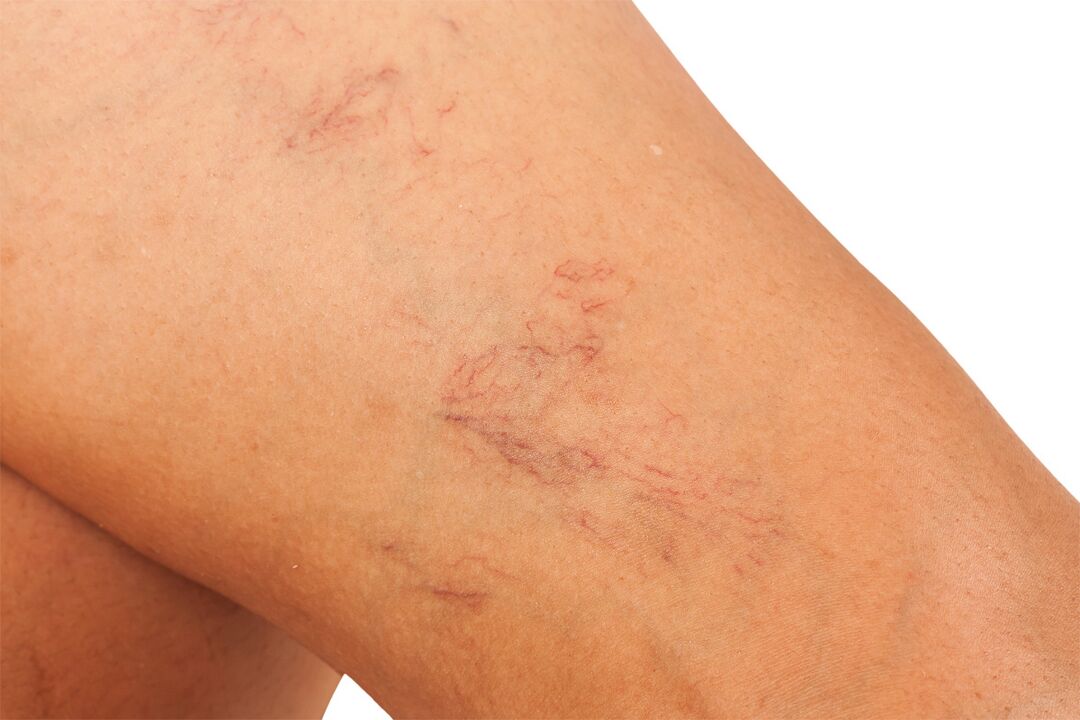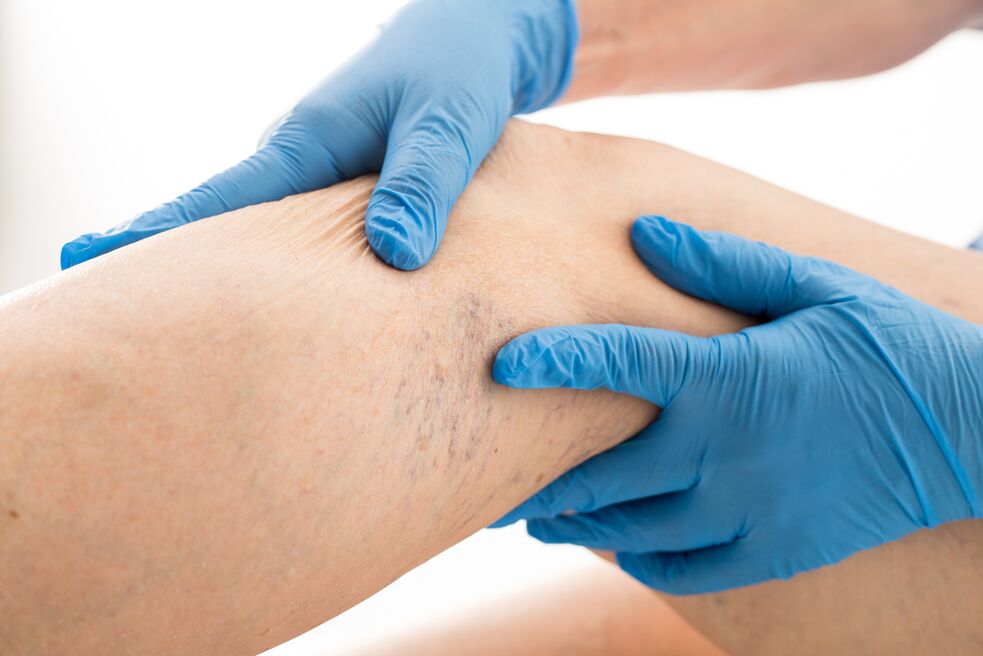Probably every third, or even every second person today suffers from leg varicose veins or predisposed to them. This has become a real disaster, especially when you consider what our legs are subject to today's civilized world. You need to know which varicose veins are dangerous before the appearance of your first signs.
What are the veins varicose veins

Varicosis in the legs is a chronic disease in which veins in the legs expand, creating us as a result of which blood flow is disturbed and blood remains in the venous system. In the disease, the veins lumen expands, as a result of the blood exit from the veins, the veins in the legs have valves that pass the blood only, which does not allow to stagnate in the blood in the legs. If the work of such valves is disturbed, the blood begins to move in a different direction, respectively, stagnate in the legs.
The causes of varicose veins in the legs in women and men
Among the causes of varicose veins in the legs are called, first and foremost, a hereditary predisposition to this disease. If in your family, someone has a varicose veins in the legs, the risk of getting sick for you is extremely large, as the disease is due to the hereditary weakness of the venous-one wall of the most common causes.
The varicose veins in the legs are mainly female diseases, as the use of high shoes significantly increases the risk. In addition, hormonal shakes are added to the fire during pregnancy or menopause, which also causes veins to expand in women.
Most of the time, women on the legs are sick after forty -thin years, but at a younger age is often found. Most of the time, in adolescents or young people, the disease develops due to open messages from arterial fistulas between veins and arteries.
The expansion of the veins in the legs is found in men, by the nature of the profession, giving the legs a great load. This disease is usually sick with people who carry a sedentary lifestyle, spend a lot of time standing, move little. Close the inconvenient shoes, as well as extra pounds, contribute to the formation of stagnation. Liver diseases such as cirrhosis or hepatitis can cause varicose veins in the legs.
This disease is also quite common among athletes, and this suggests that excessive physical activity can also provoke it.
Symptoms and signs
In the early stages, the symptoms of varicose veins in the legs are not obvious, the disease may occur imperceptibly. Or the signs of vein expansion are obvious - large veins rolled into the legs begin to project itself under the skin, but one person feels no pain. Vienna can manifest, gradually project the skin and can manifest after hard exercise or hard work. It turns out that the veins appear suddenly after a person spent all day standing in the heat.
But if, when examining the leg, you realized that the veins under the skin were thick, that there were places with friction extensions, and the veins themselves swell when you get up and fall when it goes to bed, probably starts the varicose veins.
Another symptom is the swelling of the legs during the day during the session, standing, walking, as well as decreasing swelling in the lying position.
A bright feature of the disease is also pigmentation of the inner surface of the legs - the skin is compacted, becomes less elastic, acquires a painful shine. In areas with this skin, hair falls.
Varicosis is also characterized by a constant feeling of fatigue in the legs, pain and burning. A person is quickly tired, sometimes seizures are observed.
Diagnosis and treatment: medicines, operations, popular medicines
Varicherosis is diagnosed by examining a surgeon by a specialist, as well as based on Uzu veins data. The phlemoping is also performed, that is, the substances of contrasting spots are introduced into the blood and after which the veins are studied.
Treatment depends on what stage the disease is and whether the disease is accompanied by complications. Treatment can be based on conservative and surgical methods. Conservative means wearing tight socks or pants, the use of drugs for internal and external use. Conservative treatment methods also include sclerotherapy and laser irradiation. In particularly complex cases, veins are surgically removed.

A person who suffers from leg varicose veins should know that in the event of a sudden increase in the leg, fever and skin compaction, it is necessary to urgently call a doctor. This attack can be accompanied by shortness of breath, a sense of shortness of breath, weakness and bleeding.
Expert opinion: How is this related to varicose veins? An expanded vein occurs, thrombus inflammation is thrombophlebitis. This disease can occur at high body temperature. Part of the thrombus can break and enter the pulmonary artery, which will cause shortness of breath and development of serious life -threatening symptoms.
Not in these cases with home treatment - call a doctor.
The most effective and radical method for treating leg varicose veins is obviously operations. The operation uses whether conservative treatment methods are ineffective. The essence of the operation comes down to the fact that, through small skin incisions, the surgeon removes expanded veins. So the leg is completely tied and, after a few hours, the patient can stand and even walk. This is perhaps the only guaranteed way to get rid of the serious consequences of the disease.
Popular remedies can help in the course of treatment with traditional methods or relieve the patient's condition. Therefore, the main components when creating medicinal ointments are:
- Horse chestnut;
- Kalanchoe;
- Sagebrush;
- White willow bark;
- Mokrin;
- Celandine;
- cabbage.
Popular products based on animal fat, apple cider vinegar, beekeeping products (honey, purposes), body, clay and other components will also help cure the disease.
The consequences of varicose veins
The varicose veins of the legs cannot be left by themselves, should be treated because, developed, this disease can lead to many unpleasant and sad consequences. Therefore, varicose veins can be complicated by eczema and dermatitis - inflammatory skin diseases in the legs, the cause of which is precisely the stagnation of venous blood. Eczema is characterized by the appearance of redness foci on the skin, and the edges of this redness are unequal, the skin in these itching places, cracks or bubbles appear.
Varicosa eczema, in turn, can turn into a trophic ulcer. A trophic ulcer is also a complication of varicose veins - it is an ulcer that does not heal for a long time on the skin in the leg. A trophic ulcer begins with a shallow ulcer characterized by a bloody or transparent liquid at the bottom. This is an extremely painful wound that can completely ruin a person's life - leads to a violation of life, sleep.
One of the most common complications of the varicose veins in the legs is thrombophlebitis, ie inflammation of the vein, accompanied by the formation of a blood clot or blood clot. Thrombophlebitis is usually accompanied by intense pain when walking, fever, redness of the skin and the formation of the seal. With thrombophlebitis, there are possible ruptures of the vein at the expansion site, as is formed bleeding. In this case, it is necessary to call immediately to a doctor.























